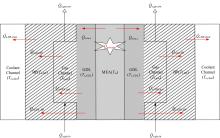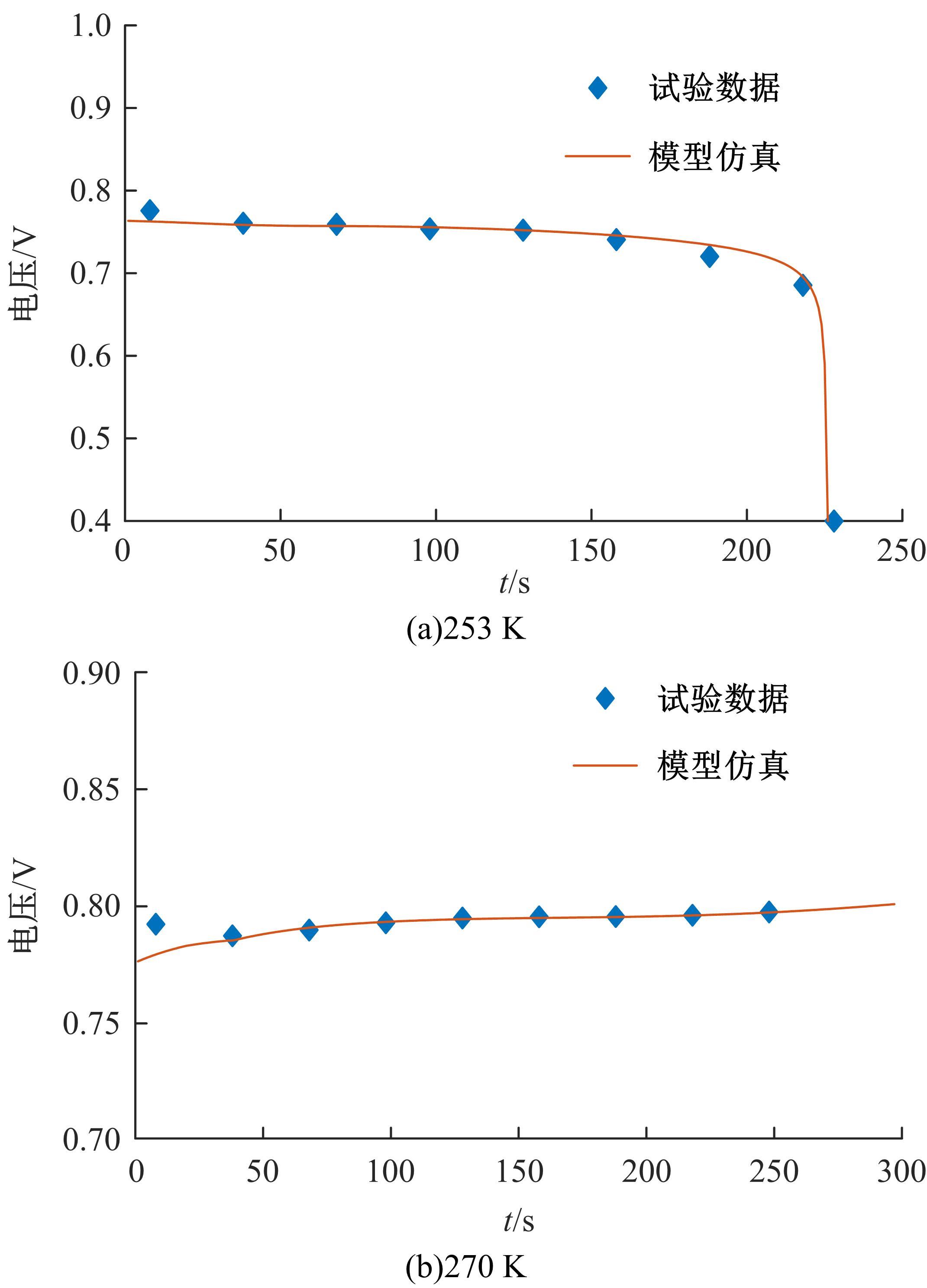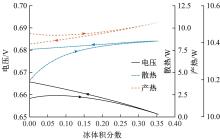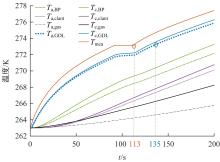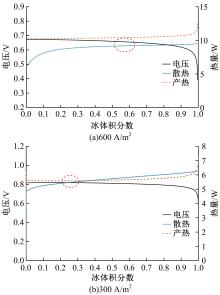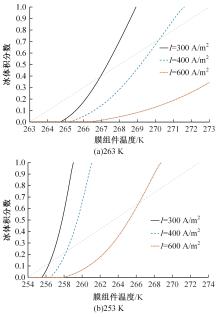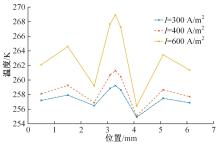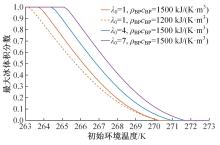吉林大学学报(工学版) ›› 2022, Vol. 52 ›› Issue (9): 2139-2146.doi: 10.13229/j.cnki.jdxbgxb20220100
• • 上一篇
质子交换膜燃料电池低温启动水热平衡特性
- 吉林大学 汽车仿真与控制国家重点实验室,长春 130022
Hydrothermal characteristics of proton exchange membrane fuel cell start⁃up at low temperature
Qi-ming CAO( ),Hai-tao MIN,Wei-yi SUN(
),Hai-tao MIN,Wei-yi SUN( ),Yuan-bin YU,Jun-yu JIANG
),Yuan-bin YU,Jun-yu JIANG
- State Key Laboratory of Automotive Simulation and Control,Jilin University,Changchun 130022,China
摘要:
针对质子交换膜燃料电池(PEMFC)冷启动过程中水热不平衡导致的积冰和停机现象,从系统产热和传热特性机理研究出发,搭建了电池内部传热和温度计算的数值模型;分析了不同冰体积下系统产热和散热的演变规律;建立了预测冷启动停机的水热平衡条件;研究了不同电流密度等系统参数对启动性能的影响。结果表明:系统产热与散热相同时,系统产热将低于冰融化潜热,导致停机;高电流密度能提升膜电极温度,降低对外层换热,有利于缩短冷启动时间。
中图分类号:
- TM911.4
| 1 | Wang Jun-ye. Theory and practice of flow field designs for fuel cell scaling-up: a critical review[J]. Applied Energy, 2015, 157: 640-663. |
| 2 | Jiao Kui, Li Xian-guo. Effects of various operating and initial conditions on cold start performance of polymer electrolyte membrane fuel cells[J]. International Journal of Hydrogen Energy, 2009, 34(19): 8171-8184. |
| 3 | Meng Hua. A PEM fuel cell model for cold-start simulations[J]. Journal of Power Sources, 2008, 178(1): 141-150. |
| 4 | Yao Lei, Peng Jie, Zhang Jian-bo, et al. Numerical investigation of cold-start behavior of polymer electrolyte fuel cells in the presence of super-cooled water[J]. International Journal of Hydrogen Energy, 2018, 43(32): 15505-15520. |
| 5 | Amamou A, Kandidayeni M, Macias A, et al. Efficient model selection for real-time adaptive cold start strategy of a fuel cell system on vehicular applications[J]. International Journal of Hydrogen Energy, 2020, 45(38): 19664-19675. |
| 6 | Du Qing, Jia Bin, Luo Yue-qi, et al. Maximum power cold start mode of proton exchange membrane fuel cell[J]. International Journal of Hydrogen Energy, 2014, 39(16): 8390-8400. |
| 7 | Luo Yue-qi, Jiao Kui, Jia Bin. Elucidating the constant power, current and voltage cold start modes of proton exchange membrane fuel cell[J]. Int J Heat Mass Tran, 2014, 77: 489-500. |
| 8 | Jiang F M, Wang C Y, Chen K S. Current ramping: a strategy for rapid start-up of PEMFCs from subfreezing environment[J]. Journal of the Electrochemical Society, 2010, 157(3): B342-B347. |
| 9 | Jiang H L, Xu L F, Struchtrup H, et al. Modeling of fuel cell cold start and dimension reduction simplification method[J]. Journal of The Electrochemical Society, 2020, 167(4): No. 044501. |
| 10 | Tajiri K, Tabuchi Y, Kagami F, et al. Effects of operating and design parameters on PEFC cold start[J]. Journal of Power Sources, 2007, 165(1): 279-286. |
| 11 | Schießwohl E, von Unwerth T, Seyfried F, et al. Experimental investigation of parameters influencing the freeze start ability of a fuel cell system[J]. Journal of Power Sources, 2009, 193(1): 107-115. |
| 12 | Min Hai-tao, Cao Qi-ming, Yu Yuan-bin, et al. A cold start mode of proton exchange membrane fuel cell based on current control[J]. International Journal of Hydrogen Energy, 2022, 47(8): 5507-5520. |
| [1] | 刘继宗,吴小平,孔维华. 基于鱼群优化算法的有轨电车用燃料电池混合动力系统参数配置[J]. 吉林大学学报(工学版), 2022, 52(9): 2004-2013. |
| [2] | 王克勇,鲍大同,周苏. 基于数据驱动的车用燃料电池故障在线自适应诊断算法[J]. 吉林大学学报(工学版), 2022, 52(9): 2107-2118. |
| [3] | 杨子荣,李岩,冀雪峰,刘芳,郝冬. 质子交换膜燃料电池运行工况参数敏感性分析[J]. 吉林大学学报(工学版), 2022, 52(9): 1971-1981. |
| [4] | 胡云峰,于彤,杨惠策,孙耀. 低温环境下燃料电池启动优化控制方法[J]. 吉林大学学报(工学版), 2022, 52(9): 2034-2043. |
| [5] | 都京,赵洪辉,王宇鹏,丁天威,魏凯,王恺,韩令海. 基于AMESim模型的燃料电池发动机排氢策略优化及整车搭载验证[J]. 吉林大学学报(工学版), 2022, 52(9): 2069-2076. |
| [6] | 张冲,胡云峰,宫洵,孙耀. 燃料电池阴极流量无模型自适应滑模控制器设计[J]. 吉林大学学报(工学版), 2022, 52(9): 2085-2095. |
| [7] | 隗海林,王泽钊,张家祯,刘洋. 基于Avl-Cruise的燃料电池汽车传动比及能量管理策略[J]. 吉林大学学报(工学版), 2022, 52(9): 2119-2129. |
| [8] | 张佩,王志伟,杜常清,颜伏伍,卢炽华. 车用质子交换膜燃料电池空气系统过氧比控制方法[J]. 吉林大学学报(工学版), 2022, 52(9): 1996-2003. |
| [9] | 陈凤祥,张俊宇,裴冯来,侯明涛,李其朋,李培庆,王洋洋,张卫东. 质子交换膜燃料电池氢气供应系统的建模及匹配设计[J]. 吉林大学学报(工学版), 2022, 52(9): 1982-1995. |
| [10] | 刘镇宁,江柯,赵韬韬,樊文选,卢国龙. 大功率质子交换膜燃料电池测试系统的开发及试验[J]. 吉林大学学报(工学版), 2022, 52(9): 2025-2033. |
| [11] | 池训逞,侯中军,魏伟,夏增刚,庄琳琳,郭荣. 基于模型的质子交换膜燃料电池系统阳极气体浓度估计技术综述[J]. 吉林大学学报(工学版), 2022, 52(9): 1957-1970. |
| [12] | 裴尧旺,陈凤祥,胡哲,翟双,裴冯来,张卫东,焦杰然. 基于自适应LQR控制的质子交换膜燃料电池热管理系统温度控制[J]. 吉林大学学报(工学版), 2022, 52(9): 2014-2024. |
| [13] | 张恒,詹志刚,陈奔,隋邦杰,潘牧. 气体扩散层各向异性传输特性的孔尺度模拟[J]. 吉林大学学报(工学版), 2022, 52(9): 2055-2062. |
| [14] | 陈凤祥,伍琪,李元松,莫天德,李煜,黄李平,苏建红,张卫东. 2.5吨燃料电池混合动力叉车匹配、仿真及优化[J]. 吉林大学学报(工学版), 2022, 52(9): 2044-2054. |
| [15] | 武小花,余忠伟,朱张玲,高新梅. 燃料电池公交车模糊能量管理策略[J]. 吉林大学学报(工学版), 2022, 52(9): 2077-2084. |
|
||
